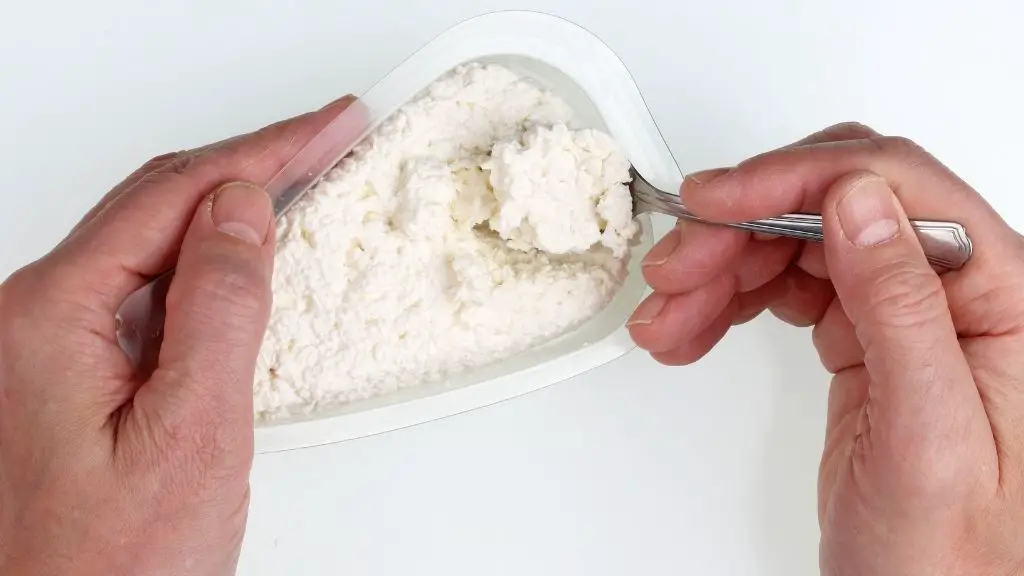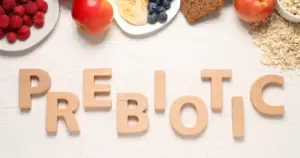Is Paneer Good For Diabetes [Benefits, Nutrition Facts And Recipes]

Finding an ingredient as versatile as paneer might not be possible. The options are endless: a crunchy paneer side dish, paneer in rice, paneer curry, grated paneer in salads. Now, although paneer can be delicious and easily accessible, whether or not it is healthy and can be consumed by everyone is something that crosses people’s minds.
Another question that might cross your mind is whether paneer is good for diabetes or not. Paneer is a good source of protein, and since protein is slow to digest, it releases carbohydrates in a gradual manner; this way, there is no immediate sugar spike after eating paneer. This makes paneer an ideal choice of ingredient for diabetes.
Is Paneer Good for Diabetes?
Yes, paneer is good for diabetes. In fact, an individual with diabetes is often told to include more paneer in their diet. To understand why paneer is ideal for diabetes, it’s essential to first familiarize yourself with paneer as an ingredient and its nutritional value.
Paneer is made from curdling hot milk, and is also known as Indian cheese. Natural acids like lemon juice, vinegar, etc., can be used to curdle the milk. The most prominent flavor of your paneer is determined by the acid used to curdle the milk. Once the milk is curdled, milk protein, nutrients from milk, and other solid particles separate from the whey.
Once the whey is drained, the paneer is left aside to set until its texture resembles that of firm tofu. The paneer, once set, can be sliced, grated, and also used as a crumble; it can also be used in a variety of ways, for instance, it can be fried, tossed in a pan to add to a salad, added to curries, or consumed as a side dish.
Paneer nutrition facts per 100g
The following are paneer nutrition facts per 100g according to the USDA [1]
| 321 kcal Energy | ||
| Nutrient | Content in 100g | RDA (% of total RDA) |
| Macros | ||
| Total Carbohydrate | 3.57 g | 130 g (2.7%) |
| Sugar | 3.57 g | 30 g (11.9%) |
| Protein | 21.43 g | 52 g (41.2%) |
| Total Fats | 25 g | 77 g (32%) |
| Saturated fats | 16.07 g | 30 g (53.5%) |
| Micros | ||
| Cholesterol | 89 mg | 300 mg (29.6%) |
| Calcium | 714 mg | 1000 mg (71.4%) |
| Vitamin A | 214 mcg | 900 mcg (23.7%) |
| Magnesium | 8 mg | 420 mg (1.9%) |
| Sodium | 18 mg | 2000 mg (0.9%) |
As shown in the table, paneer is an excellent source of protein. It has an RDA of 41.2%, which means that eating paneer can satisfy 41% of your daily protein requirement. Since protein takes a long time to digest, it can keep you full for a considerable amount of time. During this digestion process, carbohydrates are released gradually, which ensures that there is no spike in your blood sugar levels after eating something rich in protein like paneer. This information is essential because diabetes is a condition wherein your blood sugar levels are higher than usual. This could either be because of how your body processes blood sugar (Type 2 diabetes) or because your pancreas produces little to no insulin (Type 1 diabetes), and we know insulin is essential for breaking down blood sugars.
When the carbohydrates are being released gradually, your body will have more time to break it down and will not do so all at once, thus preventing a spike in your blood sugar levels. This can be highly beneficial for a person with diabetes since their main concern is their blood sugar levels. Therefore, paneer is not only good for type 1 diabetes but is also good for Diabetes type 2 [2].
Glycemic index is the ability of a carbohydrate to increase the blood sugar levels of an individual. Paneer has a relatively low glycemic index since the carbs are released gradually, which prevents your blood sugar level from spiking. Thus, making paneer an ideal snack or ingredient for a person with diabetes.
How much paneer can a person with diabetes eat in a day?
How much paneer a person with diabetes can eat in a day varies from person to person and their body requirements. However, a safe limit would be 80g-100g a day. Eating paneer daily might pose an issue, therefore consult a professional regarding how much and how often you can eat paneer.
Is Paneer Good for Sugar Patients?
A “sugar patient” is essentially just a diabetic; it is just another term that we use. With that in mind, it is safe to say that paneer is safe to consume if you have high sugar levels. Another interesting fact is that paneer is rich in magnesium and can help control the body’s blood sugar levels, as magnesium plays a vital role in doing so. The development of type 2 diabetes has been related to a low dietary intake of magnesium [3].
Does Paneer Contain Sugar?
Yes, paneer does contain sugar. 100g of paneer consists of around 30g of sugar. Even though paneer contains sugar, it is still considered to be healthy for an individual with diabetes. The amount of protein it contains overrides the amount of sugar it contains. The sugar in the paneer is released gradually once it’s broken down because of the amount of protein it is loaded with. This way, your blood sugar levels do not vary with significant differences.
Paneer Recipes for Diabetes
We briefly discussed how paneer is a versatile ingredient, but now we will talk about that in a little more detail. Let’s take a look at everything you can cook up with paneer!
Salads
Finely chop or grate your paneer. Cook it in a pan as per your preference. Add it to your favorite salad and enjoy this protein-rich, diabetes-friendly salad!
Curries
Shahi paneer, paneer butter masala, malai kofta, palak paneer, tawa paneer, the list goes on. Adding cooked paneer to curries, often a blend of greens or vegetables is one of the most popular forms of incorporating paneer into a dish. One of the curries you can try, is palak paneer. The spinach and the paneer together can prove to be highly healthy. Eating palak paneer with roti can be a part of your diet plan as a person with diabetes.
Side dishes
If you’re not up for some curry during the day, you can always use paneer for a side dish; Paneer 65, Chilli Paneer, Paneer Manchurian are a few of your options. However, it is essential to watch what is going into your dish since certain ingredients like oil could pose a problem.
Other ways of incorporating paneer into your diet are adding it to everyday dishes; cooking up some fried rice? Add a few cubes of paneer for that extra texture and flavor. Noodles? You can still do the same. You could also add tiny paneer cubes to your sandwich or pizza. The options are endless!
Note – Paneer as an ingredient by itself isn’t unhealthy; however, you should watch out for the other ingredients. The other ingredients that we add while cooking a paneer dish might be considered unhealthy, like excess oil, spices, etc. However, consuming paneer in excess can be unhealthy and cause side effects like bloating, gas, diarrhea, and stomach pain.
FAQs
Can we eat paneer raw?
Yes, you can eat paneer raw. You can add it to your salads and other light snacks you prefer. The thick, dense texture of paneer, along with its nutritional value, can leave you feeling full for a good amount of time. Raw paneer, unlike fried paneer, packs fewer calories and fats.
Can we eat paneer daily?
To answer the question of whether you can eat paneer daily or not, we would say yes. It is considered safe to consume every day within limits. However, consult a doctor or a nutritionist regarding how often you should be eating paneer. Your health requirements might vary from that of others; therefore, taking the advice of a professional is the best way to go about it.
Can I eat paneer on keto?
Yes! You can definitely eat paneer when on a keto diet. A keto diet consists of foods that are low in carbohydrates but rich in fats and proteins. Paneer as an ingredient is low on carbohydrates and is loaded with proteins and fats; hence making it ideal for a keto diet.
With that said, we can confirm that paneer is keto-friendly, and consuming it on the keto diet might actually be beneficial.
Does paneer increase cholesterol levels?
No, eating paneer does not increase your cholesterol levels. Although your blood cholesterol levels are unrelated to the cholesterol-rich foods you might consume, it is best to consult a doctor before you make the call of whether or not to include paneer in your diet.
Wrapping Up
Paneer is almost like a blessing in disguise. It is versatile, delicious, and equally nutritious. It won’t just please your taste buds but also your organs and overall health. However, due to how rich it feels in texture and density, diabetic people often look at paneer skeptically.
Paneer is nutritious and safe to consume, even for diabetes. In fact, it helps control your blood sugar levels. The protein and magnesium present play a massive role in keeping your blood sugar levels in control. Therefore, diabetic or not, enjoy that crunchy piece of paneer without any worries!
References
- USDA. “Paneer” Food Data Central, (2019).
- Kumar, Sunil et al. “Paneer-An Indian soft cheese variant: a review.” Journal of food science and technology vol. 51,5 (2014): 821-31.
- Barbagallo, Mario, and Ligia J Dominguez. “Magnesium and type 2 diabetes.” World journal of diabetes vol. 6,10 (2015): 1152-7.
![Blue Foods List [with pictures]](https://keevs.com/wp-content/uploads/2023/03/Blue-Foods-List-with-pictures-300x158.png)






